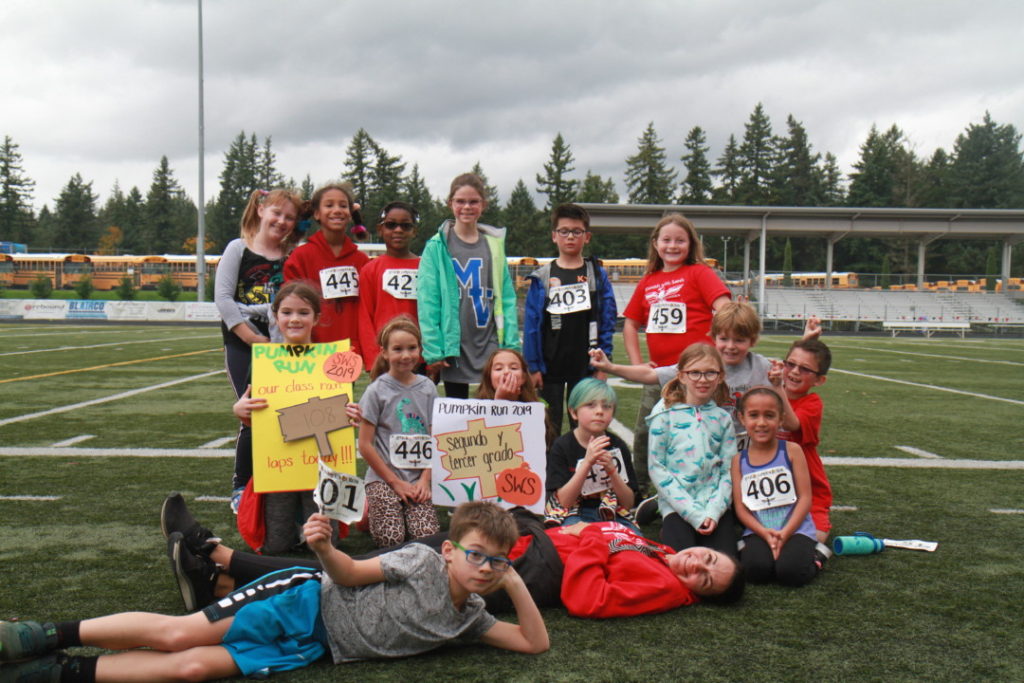La Lectura
Students received their new spelling list. The spelling test will be next Friday, October 25th. We created a class book with this list of spelling words. Each student illustrated and wrote a sentence for one word and then we combined them and made copies. (Some kiddos needed to write a little darker for the copier to pick up so we traced over words.)
Students also received a new reader this week. They should be reading in Spanish on a nightly basis but I know this can sometimes be difficult. To help with this, I have created class logins on kidsa-z.com. They can read a book aloud, while the computer records their reading. I will be able to listen to each student, keep a running record, ask comprehension questions, and move them along to the appropriate level. We will be creating a class chart for progress minutes to help encourage them to read in Spanish. (Any Spanish reading counts towards this.) I’m pretty excited about this, as finding something new to read in Spanish has been a continual question from families. I sent home a parent information sheet on Thursday. If you would like to receive email updates, please fill out the bottom of the form and return it.
We also did some identification of topic sentences in paragraphs and discussed how this is important when reading AND when writing.
We added the letter J to our cursive skills.
Reading
On Thursday I sent home a new source for Spanish reading: www.kidsa-z.com Your child has the same username and password as Prodigy. This site has hundreds and hundreds of Spanish (and English) readers. Students took a placement test on Thursday and will be placed at the correct level as I work through them this weekend. This is a GREAT online resource because:
- It puts hundreds of Spanish (and English) books in your child’s hands.
- It allows your child to read at the appropriate level.
- It records your child’s reading so I can listen and keep a running record to help place them in the appropriate level.
- It asks comprehension questions, to make sure your child is understanding what they are reading.
Please let me know if you have any questions about this. (It is not mandatory to use this online system but is useful to help get that nightly Spanish reading in.)
Las matemáticas
This week we jumped right into our new math unit: Addition to 10,000. Students showed great understanding of addition with and without regrouping. To help them be more efficient mathematicians we have paused our multiplication timed tests and started doing addition timed tests. If your child is not passing their addition timed tests each day please be sure to get out the flashcards. Addition facts should be automatic. Students are given 2 minutes to complete 50 basic addition facts each day. Their addition skills directly affect their ability to move smoothly through our math lessons.
Science
Our science objectives this week were to:
- Describe and/or review seven of the systems of the human body
- Explain that the human body includes the following systems and identify the function of each: skeletal, muscular, and nervous
- Identify cells as the basic building blocks of all living things and explain that most cells are too small to be seen without a microscope
- Explain the relationship between cells, tissues, organs, and systems
- Explain that each system is made up of different types of cells (bone cells, muscle cells, nerve cells, blood cells, etc.)
- Recall there are 206 bones in the human body
- Identify examples of axial bones and explain their functions
- Explain briefly the composition of bones
History and Geography
This week we started a new unit: The Ancient Roman Civilization. Our objectives were to:
- Explain why Rome was considered a civilization
- Identify and locate on a map the following areas: Atlantic Ocean, Mediterranean Sea, Black Sea, Aegean Sea, Europe, Italy, Rome, Pompeii, Mount vesuvius, Greece, France, Spain, England, Africa, Asia, and Turkey
- Locate the Bosporous Strait and the Strait of Gibraltar, and explain the purpose of these waterways
- Identify Rome as the capital of present-day Italy
- Identify the country of Italy as a peninsula
- Define the terms BC/BCE and AD/CE
- Describe how the work of archaeologists has helped us gain info about the ancient Roman civilization
- Identify some of the contributions of the ancient Roman civilization

